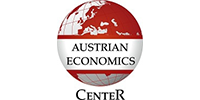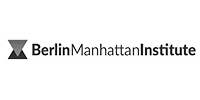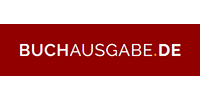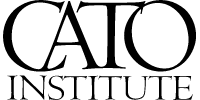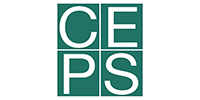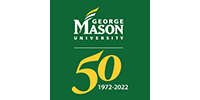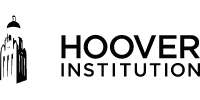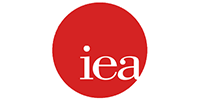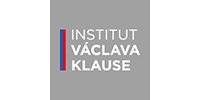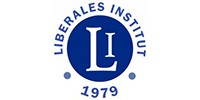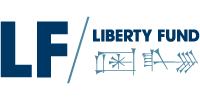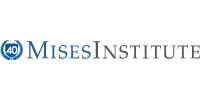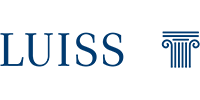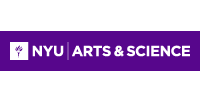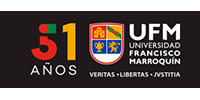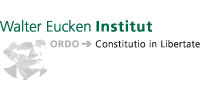2nd Award in Vernon Smith Prize 2024
The Mischaracterization of Education as a Merit Good
Garret Thomas Molloy
ABSTRACT
This essay advances three claims (1) The current provision of public education characterizes education as a merit good. This characterization motivates state intervention to correct for merit good’s characteristics of positive externalities and consumer uncertainty (2) The provision of free public education through a merit good framework has broadly led to lower quality and politically biased education. Compared to private provision, free public education benefits administrators and teacher unions, while disadvantaging the students it purports to serve. (3) Education provision would better advantage students and parents if the state resolved these issues by prioritizing parental choice through Milton Friedman’s voucher system.
Private Versus Public Good
The classical definition of a private good is twofold, (1) Excludable: private goods can easily exclude individuals from benefits that arise. Schooling is excludable as students can be denied enrollment in any given school. (2) Rivalry: the consumption of the good prevents others from benefitting. Education is also rivalrous as the addition of extra students consumes teaching resources. Public goods on the other hand, are both non-excludable and non-rivalrous, hence, the debate over education as a public or private good is settled. Education is a private good.
Claim 1: Public Education provision is provided through a merit good framework
Merit Goods
When advocates of public education state ‘education enables democracy, hence, schooling is a public good,’ the correct interpretation is that education is good for the public but indeed not a public good 1. Therefore, education is a good that is said to offer society positive externalities. Merit goods, as popularized by Richard Musgrave, are private goods that exhibit (1) positive externalities and (2) are undervalued by consumers 2. Due to these characteristics, it is believed that education is merit good. According to Musgrave, education, like all merit goods, is consumed at suboptimal levels. Thus, it is the role of the government to intervene to ensure optimal levels of consumption.
Merit goods exhibit:
(1) Positive externalities: Musgrave’s conception of merit goods sees positive externalities as its most defining characteristic. Positive externalities are benefits that a third party receives as an indirect result of another party’s actions. As the benefits to society are not reflected in the benefits to consumers, consumers under-consume merit goods.
Musgrave himself saw free public education as a merit good, stating, “Budgetary provision for free educational services are cases in point.”3 The current provision of public education closely parallels Musgraves rationale. In the name of cultivating ‘democratically minded citizens’ education planners have (1) enforced compulsory education to combat the harm of underconsumption, and (2) put the planning of curriculums, funding and structure of schools in the hands of “experts,” rather than pupils and parents in order to ensure the positive externalities sought are achieved.
(2) Preference distortion problems: Musgrave posits that preference distortion exists in merit goods primarily due to uncertainty associated with educational outcomes.
Uncertainty: Individuals’ lack of knowledge regarding the benefits of merit goods lead to underconsumption. Common causes of uncertainty include, (1) non-consumption by the purchaser, (2) remoteness of benefits and (3) costs to information acquisition. Therefore subject experts intervene to ensure consumption.
In order to account for the issue of limited knowledge that comes with (1) non-consumption by the purchaser, educational authorities have by and large prevented the parent from choosing their child’s public school in the first place. Justified by the idea that educational administrators have superior knowledge of schools to parents. In order to account for (2) & (3), experts mandate the curriculums imposed on children, for the benefits of certain curricula are too remote and complex for parents to comprehend. Power is delegated to educational authorities who are said to take a long-term view of benefits and have near perfect information.
In conclusion of my first claim, It is now clear that policymakers view the typology of an economic good as a direct determinant in the framework by which it is provided. Policymakers perceive education as a merit good, hence they intervene in the market in order to meet the characteristics of a merit good. If we can indict the negative policy outcomes that are derived from considering education a merit good, we can prove that education is not best characterized as a merit good. If policymakers considered education to be another type of good, they would have arrived at a radically different and perhaps improved prescription of education policy.
Claim 2: Public Education characterized as a merit good benefits administrators and disadvantages students
The historical transition to education as a merit good in the American context: Education has always been a principal element of the American Dream. At first schools were private and purely voluntary. Beginning in the 1840s an educational reform movement began to largely replace the private system with free schools paid for indirectly by taxes. According to the historian E.G. West, the campaign was not led by dissatisfied parents but “mainly by teachers and government officials.”4 According to E.G. West, the arguments were all pitched in terms of public interest. However, much of the support of teachers and administrators for the public school movement derived from a self interest. For they would enjoy more secure employment and a greater degree of control if the government rather than the parent was the payer.
When the discipline of the price signal was lost, the most important factor preserving much of the benefits of private education was the U.S. constitution’s narrow and limited allocation of powers to the federal government.5 The town, small city or subdivision were thus charged with running the school, not a centralized federal government. This small scale enabled the parents to substitute competition for the monitoring and petitioning of educational authorities. After the Great Depression, the public joined academics, administrators and unions in their broad support for the growth of government, in order to solve society’s problems. The Kenynesian instinct of government intervention was furthered post the World Wars, for if the government had solved the wartime crises through mass social coordination, why could it not solve social problems through the same means? Hence, power in our economic and social institutions tended toward more government control. With this educational funding and control in towns, small cities and subdivisions was transferred to larger unified school districts, the state and federal level.
Empirical evidence confirms this, in 1920 local funds made up 83% of all revenues of public schools, federal grants less than 1% and the rest from state funds. By 1960 that local share of funding had fallen to 40% with 50% from the state and 10% from the federal government. Today the local share of funding rests at 30%, the state at 60% and federal funds roughly constant.6 Funding and control of schools was transferred from local accountable school boards to impersonal bureaucracies at the state level. This crucially ended the original compromise, parents now lacked not only competition in education but the ability to control and direct educational authorities in the interests of students. Hence, by the 1960s, the characteristics of public education provision had realized the characterization of merit good provisions. The first characteristic of merit goods. (1) Positive externalities were resolved in the 1840s through free compulsory public education and (2) the uncertainty of consumers was resolved in the 1960s by redelegating school funding and curricular policy from widespread parental involvement to centralized boards of educational experts. Education provision was finally realized as a merit good framework in the 60s. At this time America was ranked 1st in education. Today it is ranked approximately 24th.7
Public education’s provision defined through a merit good framework has four primary negative effects, (1) loss of choice, (2) dispersed knowledge problems, (3), perverse incentives and (4) political bias.
(1) Loss of choice: Government provision of free schooling ensures the threshold by which new schools can effectively compete is dramatically heightened. Most parents cannot afford to pay the $15,591 the U.S. government spends annually per child, alone afford any extra fees required by a private school on top of that. If parents choose private schools, they have no ability to recoup the money already lost in taxes spent on public education. Hence the vast majority of students are condemned to public schools. The only schools that can effectively compete are parochial schools heavily subsidized by the church or those for the ultra wealthy. Moreover, choice is further reduced among public schools as children are forced to attend the school in their geography. The lack of choice directly leads to lower-quality education. For example, teacher unions can guarantee the most favorable terms at the expense of quality, while administrators can oversee falling test scores because parents have no ability to choose other schools. In this regard those most affected by the status quo are the poor and middle class, for whom private schools are too costly. Ultimately, the situation is worst in the inner cities of America, the ‘banlieues’ of France and the ‘sozial schwacher stadtteile’ of Germany where students are trapped in bad schools with no way out. Parents are forced to accept public education in any form provided, as there is no affordable private alternative, limited means to
petition impersonal administrators and compulsory attendance in schools in your geographic area. Hence, if parents disagree with teaching methods, political bias in classrooms or falling test scores, administrators can simply choose to ignore these demands.
(2) Dispersed Knowledge Problems: Hayek argues in his work, ‘The Use of Knowledge In Society’ that dispersed knowledge—information about local conditions, preferences, and opportunities held by individuals—is best contained in price signals.8 He explains that no central authority can effectively gather and process this dispersed knowledge, as it is decentralized, often tacit, and constantly changing. Profit maximization provides a mechanism for aligning producer actions with the price signals. These price signals encapsulate the dispersed knowledge of consumers. This informs supply and resource allocation, allowing producers to make decisions that allocate resources efficiently without requiring a central planner. In essence, the profit system incentivizes individuals to discover the demands of customers, ensuring that dispersed knowledge is dynamically and effectively integrated into the economy. Educational administrators are best characterized by Ludwig Von Mises quote “bureaucratic management is the method applied in the conduct of administrative affairs, the result of which has no cash value on the market.”9
Educational administrators are not subject to the price signal, hence, they have no financial incentive to respond to dispersed knowledge. A system that utilizes price signals would have a stronger incentive to be aware of dispersed knowledge, such as students leaving the school due to falling test scores, bullying, teacher quality and a whole host of other issues. Prototypical of administrators’ lack of responsibility to price signals, the effects of increasing bureaucratization and centralization of authority in the U.S. public school system from 1971-77, saw total professional staff in U.S. public schools increase by 8%, while cost per pupil increased by 58%. In the 6 year period from 1968-74, the number of students increased by 1%, total professional staff increased by 15%, teachers by 14% and most notably supervisors went up 44%.10 Public schools can do this because they are not beholden to satisfying consumers’ demands contained in price signals. Ultimately, this spending benefited administrators rather than the students they purport to best serve.
(3) Perverse Incentives: benefits to teacher unions rather than students: As aforementioned, the historian E.G. Wells identified that public education provision was a result of advocacy mainly “by teacher unions and government officials” not parents.11 Wells also notes that the main argument of the campaign was that the poor were unable to receive an adequate education. However, if these groups were truly concerned with the plight of the poor the obvious answer would have been to exclusively subsidize education for the poor. Hayek identifies the guise of social justice to justify support based on “narrow self interest”. “The trade unions, since they were the first of such groups who succeeded in clothing their demands with the aura of legitimacy by representing them as a requirement of ‘social justice’. But though it was initially the use in the service of relatively poor and unfortunate groups that made discrimination in their favor appear justifiable.”12
Teacher unions and administrators supported the public school movement, as they expected a wider degree of control and greater assurance of salaries in a public system as opposed to their private sector alternative. In the U.S. the fraction of students enrolled in unionized public school districts rose from 1 percent in 1963 to 43 percent in 1992, as administrators centralized schools.13 Teacher unions arose as a direct response to the centralization of public education, in order for teachers to effectively bargain with centralized educational authorities they required unions. This increased bargaining power combined with lack of school choice can be a potent force in promoting administrators rather than students’ concerns. First, unionization is estimated to raise per-pupil spending by about 12 percent.14 Roughly three-quarters of this greater spending takes the form of higher teachers’ salaries (estimated to rise by 5 percent with unionization) and lower student-teacher ratios. However, this increase in spending on teachers saw student performance decline. The dropout rate increased by an estimated
2.3 percentage points and test scores fell. Hence, centralization and unionization generally sees more funds spent on teachers and declining results for students. As shown by the above study, in private systems rising spending directly results in increased performance. Hence, a private system ensures spending adheres to the interests of students not unions.
(4) Political bias: If the state is to provide funds to furnish public education as a merit good, it does so with the goal of reaching some positive externality. If this is the case, the funding of education inevitably has strings attached in order for the state to guarantee that the funding results in the desired positive externality. Ultimately, the funder of education’s guarantee, be it the federal, state, local government or parent, comes in the form of control over the type of education provided. Thus, in practice the justification of positive externalities, inherently forces the state to direct education towards a specific outcome through homogenizing curriculums, inducing political bias or at the very least the provision of public education makes it more vulnerable to those who would seek to imbue it with political bias. Notably these effects are amplified by the centralization of the system and the limited alternatives provided to parents.
The promotion of Government agendas: Institutional dependence on government funding in colleges, secondary and primary Education: Murray N. Rothbard, described positive externalities as inherently subjective, “the concept of ‘externalities is a mirage. What is an ‘externality’ to one person is not to another; it is purely subjective.” 15 While we can broadly agree that education has positive externalities. The question whether schools should teach critical race theory, progressivism, liberalism or host bible readings is a subjective judgment.
Public education attempts to escape from this issue by implementing a Humboldtian framework. William Von Humboldt, envisioned education as a means of realizing individual possibility rather than as a method to mold individuals to the desires of educators i.e. the subjective positive externalities desired.16 They do this by offering impersonal teaching, where facts rather than political opinions are provided to students. However, it is no surprise that Humboldt was against government provision of education given that the government is least suited to execute such a framework. I provide two reasons in support of this fact.
(1) Institutional Alignment: E.G. Wells already demonstrated that teacher unions and educational administrators were the primary proponents of public education in order to guarantee a near monopoly on education, for it provided better job security and control. James Buchanan wrote, “The pursuit of monopolistic privileges through political means necessitates a close alignment with the interests and objectives of those in power, as securing such privileges depends on favorable political decisions.”17 Demonstrably, individuals who are employed by the state, have strong incentives to promote the growth of government control, for it will result in (1) greater administrative control and (2) greater funding for these bureaucrats. Therefore, institutions reliant on government financing may adjust their operations and goals to align with the preferences of political authorities, leading to a bias that reflects the interests of those in power in order to guarantee more funding. For example the ratio of liberal to conservative professors increased from about 350% since 1984 as federal funding of universities rose.
(2) Imposition of externalities misaligned with Humboldt: Comparatively, the imposition of curriculums geared towards imbuing political opinions are made dramatically easier in public
education (1) Impersonality of the bureaucracy, given that the educational administrators decide a curriculum at the state level, they are out of view of parents who would otherwise hold them accountable and monitor curriculums (2) Disputes over fact, modern political debates concern deep epistemic disagreements, given that government employed educators generally have incentives to support pro-government ideas they are more likely to side with their favored set of facts or give priority to specific favorable facts. Take the implementation of Diversity Equity and Inclusion programmes and Bible readings, the teaching of these is widely dependent on the political persuasion of administrators not parents.
Ultimately, in a free society it is not the role of the state to determine what political judgements are to be taught to children. The central issue is that when political bias arises in public schools parents have little ability to decide whether that political bias, be it reading bibles or teaching critical race theory, is appropriate for their child. When they bring these qualms to administrators they are told (1) this is done at the behest of the state’s curricular directives or (2) “tough”, parents have no ability to financially chasten teachers or change schools. Therefore a private system of parental choice in education, would enable parents to hold administrators accountable when political bias arises or at the very least give them the agency to determine the politically motivated aspects of education.
Claim 3: The provision of education via Friedman’s vouchers
In this discussion, it is also evident that the state has a role to ensure that every child receives an education as a basic necessity. Not for any positive externality predetermined by the state, but for the reason J.S. Mill proposes. “The state should compel education up to a certain standard…to [ensure he] perform his part well in life towards others and towards himself.”18 For no adult can function in modern society without adequate education in childhood.
Moreover, It is now clear that providing public education through a merit good framework has
significant negative effects, therefore, education should be solely considered a private good. While it would be preferable to simply subsidize education for poorer students alone, at present I cannot see a practical way in which the taxes levied on parents would be reduced to a degree by which the funds recouped adequately defray the fee of education. Therefore, the practical solution that best achieves both of these aforementioned aims is the implementation of Milton Friedman’s school voucher programme.19 Whereby, every parent that opts out of the public education system would receive the cost of schooling the child in the form of a voucher to be apportioned to any school, private or public, of the parent’s choice. This would produce a much wider array of alternative schools. Students’ public school options would no longer be limited by geographic boundaries. Meanwhile, public schools would continue to function insofar as demand for public schooling remained. However, if public schools continued to dissatisfy parents, any freely formed group of parents would have the funds required to start their own school. Likewise, both voluntary organizations such as charities and for profit organizations would also have a strong incentive to enter the market by economizing and offering improved schooling to satisfy parents’ desires, thereby gaining their vouchers.
Much of the positive case for viewing education via Friedman’s voucher system has already been outlined in the negative case against public provision of education. However, as proven above, (1) loss of choice would be resolved through the voucher system. Parents could vote against failing teaching methods, political bias in classrooms or falling test scores by changing schools. Forcing administrators and teachers to be held accountable for the quality of education. (2) Dispersed knowledge problems are rectified by ensuring price signals are adequately restored. With vouchers administrators are given financial incentives to fix failing schools (3) Perverse incentives are rectified as the private market chastens teaching unions demands and ensures increases in funding result in increases in student achievement. Finally, (4) political bias is ameliorated as vouchers give parents the choice to leave overly politicized schools and avoid the homogenizing effects of state curriculums.
Conclusion
The rise of Keynesian economics in the 50s and 60s coincided with the realization of education as a merit good. Hence, just as the provision of education as a merit good was justified via a trend in political economy towards Keynesian economics, the discreditation of the provision of education as a merit good is a broader indictment of the bloated state of government and Keynesian economics more broadly. A voucher system as provided for by Friedman eliminates much of the harms of public education and restores the all important aspect of choice in markets. Parents can no longer be held at gunpoint by administrators, with no alternative but to comply. Administrators are now beholden to the parents, not the government, as the final arbiters of payment. Thus they must satisfy parental demands for quality education or face the loss of students. This voucher system would end the provision of public education through a merit good framework, fundamentally recharacterizing the justification of state intervention in education’s provision from one of positive externalities and consumer irrationality to assurance that every child, poor or rich, has access to education. In the case of education it is true that education offers society benefits and some individuals consume it, yet the planned system of public provision is evidently a considerably poorer option. “While economists are quick to identify sicknesses in market economies, they must be certain the cure of intervention is not worse than the sickness itself.”20
Garret Thomas Molloy is a researcher at the Stanford Institute for Economic Policy.
1 Davies, “Public Schooling and the Public Good” 1-2
2 Musgrave, “A Multiple Theory of Budget Determination,”,333-343.
3 Musgrave, “A Multiple Theory of Budget Determination,” 336.
4 Milton Friedman and Rose Friedman, “Free to Choose”, 161.
5 Milton Friedman and Rose Friedman, “Free to Choose”, 162.
6 Milton Friedman and Rose Friedman, “Free to Choose”, 163-165.
7 U.S. Department of Education, “120 Years of American Education”.
8 Friedrich A. Hayek, “The Use of Knowledge in Society,” 521-524.
9 Mises, “Bureaucracy.”
10 Milton Friedman and Rose Friedman, “Free to Choose”, 163-165.
11 Milton Friedman and Rose Friedman, “Free to Choose”, 161.
12 Hayek, Friedrich A. “Law, Legislation and Liberty,” 142.
13 Moe, Terry M. “How Teachers Unions Let Kids Down,” 1-2.
14 Moe, Terry M. “How Teachers Unions Let Kids Down,” 1-2.
15 Rothbard, Murray N, “Man, Economy, and State,” 161.
16 Wilhelm von Humboldt, “The Limits of State Action.”
17 Buchanan, James M. “Public Finance in Democratic Process,” 142.
18 Mill, “John Stuart. On Liberty,” 118.
19 Milton Friedman and Rose Friedman, “Free to Choose”, 364.
20 Milton Friedman and Rose Friedman, “Free to Choose”, 101
Bibliography
Hayek, Friedrich A. The Use of Knowledge in Society. American Economic Review, 1945.
Hayek, Friedrich A. Law, Legislation and Liberty. Chicago: University of Chicago Press, 1973–79.
Buchanan, James M. Public Finance in Democratic Process: Fiscal Institutions and Individual Choice. Chapel
Hill: University of North Carolina Press, 1967.
Friedman, Milton. Capitalism and Freedom. Chicago: University of Chicago Press, 1962.
Friedman, Milton, and Rose Friedman. Free to Choose: A Personal Statement. New York: Harcourt , 1980.
Mill, John Stuart. On Liberty. Edited by Currin V. Shields. Indianapolis: Bobbs-Merrill, 1956. published 1859.
Musgrave, Richard A. “A Multiple Theory of Budget Determination.” FinanzArchiv/Public Finance Analysis 17, no. 3 (1956/1957): 333–343
Rothbard, Murray N. Man, Economy, and State: A Treatise on Economic Principles. published in 1962.
Von Humboldt, Wilhelm. The Limits of State Action.: Cambridge University Press, 1969.
West, E.G. Education and the State: A Study in Political Economy. Liberty Fund, 1994. Originally, 1965.
U.S. Department of Education, National Center for Education Statistics. 120 Years of American Education: A Statistical Portrait. Washington, DC: U.S. Department of Education, 1993.




